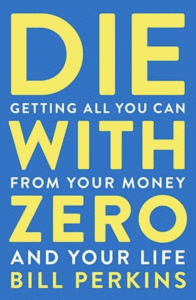Every dividend investor looks for a money-making strategy that is simple to follow and execute. The dogs of the TSX is a simple dividend investing strategy that has also beaten the TSX on many occasions, as validated through backtesting.
For some background, the Dogs of the TSX approach comes from the Dogs of the Dow on the US front and the intention for this investing strategy is to invest in safe dividend stocks and beat the TSX performance – usually the TSX60 is used as the index.
If you can beat the TSX, chances are your investing strategy is helping you reach retirement faster.
What is the Dogs of the TSX strategy?
The investing strategy is pretty simple. It consists of selecting the top 10 yielding stocks from the TSX 60 and updating your portfolio yearly with the new top 10 yielding stocks.
This strategy is also known as the BTSX strategy or the Beat the TSX strategy, depending on what you read.
The concept is that out of favor blue-chip stocks will have a higher yield, thus pushing them to the top of the list. When dividends are growing, and the stock price goes down, the yield goes up. If some high quality blue-chip stocks are out of favor more than others, than the yield shoots up as it did with Enbridge.
Generally speaking, high dividend growth stocks that can significantly outperform the TSX will not make it to the top of the list as they tend to have low yield.
Selecting the Dogs of the TSX Stocks
Here are the steps to finding the top 10 high-yielding blue-chip stocks.
- Sort the TSX60 stocks by dividend yield (forward dividend yield).
- Buy the top 10 stocks with equal dollar amounts.
- If a holding cuts the dividend, sell and replace with the next one.
- Hold your positions for one year.
- Repeat the process. If there are any differences, you swap out positions.
2024 Beat the TSX Stocks
Here are the ten stocks matching the strategy criteria for an average yield of 6.48%
2023 Beat the TSX Stocks
Here are the ten stocks matching the strategy criteria. Some of the holdings are core holdings for most Canadians which is a little sad as it means they dropped massively from previous high.
2022 Beat the TSX Stocks
Here are the ten stocks matching the strategy criteria. You get a 5.28% yield on average.
2021 Beat the TSX Stocks
For 2021, these were the picks.
5 Risks with The Dogs of the TSX
While the strategy is so simple and is technically easy to follow, it implies assigning 10% of your portfolio to each stock.
BTSX Risk #1
Rule 4 of my 31 investing rules is about defining the number of holdings you want to hold. As it happens, a survey done with readers shows that less than 15% of investors hold 10 stocks or less.
As you can see, the majority of investors hold more than 20 stocks. There isn’t much difference between a retirees and someone accumulating wealth either.
BTSX Risk #2
It’s not appropriate for all accounts. Selling and buying a full portfolio every year is not tax-efficient.
You should avoid this strategy inside your non-registered account to avoid going through capital gains.
BTSX Risk #3
A research by MoneySense also shows there is a difference in performance when using the forward yield vs the trailing twelve months yield. The choice of yield depends on your risk appetite for having stocks in the list that have been beaten down.
BTSX Risk #4
You lose complete control over your sector exposure. You can end up with more than 40% in one sector or in the same industry for that matter.
BTSX Risk #5
Timing has an impact on the returns. While it has outperformed the TSX 60 over 30 years, back testing showed that starting on a different month could have a negative impact and underperfom the TSX 60.
Modified BTSX Strategy
Following the Dogs of the TSX strategy like a robo-advisor is tough. I don’t know anyone that do it and most that follow the strategy implement a modified approach.
A strength of the approach is finding high-yield blue-chip dividend stocks. It’s perfect for income investors.
What investors often do is not sell to avoid capital gains and add to existing holdings.
Another adjustment investors do is increase the qualification of the dividend with a minimum number of consecutive dividend increases and a minimum annual dividend growth.
It’s no longer the same strategy and the more you keep going, the closer you arrive at the Dividend Snapshot Screeners. All you need to do with the screener is filter for TSX 60 stocks.
Dividend Earner’s Improved Dogs the TSX Stocks
I expanded on the criteria. To avoid too much exposure to the same industry, I limit to 2 stocks within the same industry. I also want ten years of consecutive dividend increases.
Here are Dividend Earner’s picks.
What Benchmark Should You Use?
The default benchmark used by most is the TSX60 simply because stocks are selected from the TSX 60 but is it the proper benchmark?
If I were an analyst, I want to compare apple to apple and since the selection is limited to the TSX 60, I want a fair comparison.
However, I want to compare with my alternate investing options if I am an investor. One is with the VFV ETF (Vanguard S&P 500 Index), which already easily outperforms the Canadian TSX 60 from a total return perspective.
With that said, if you want income, the Beat the TSX approach can find great income stocks and provide a decent return. I admit that using the modified version is a good approach for a non-registered account.


